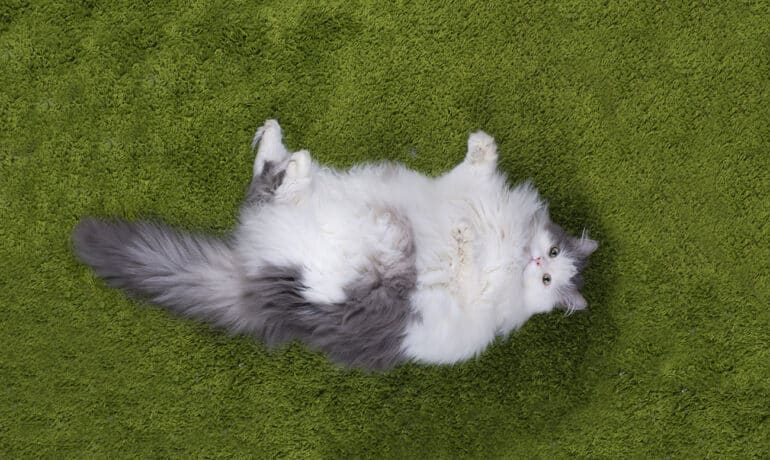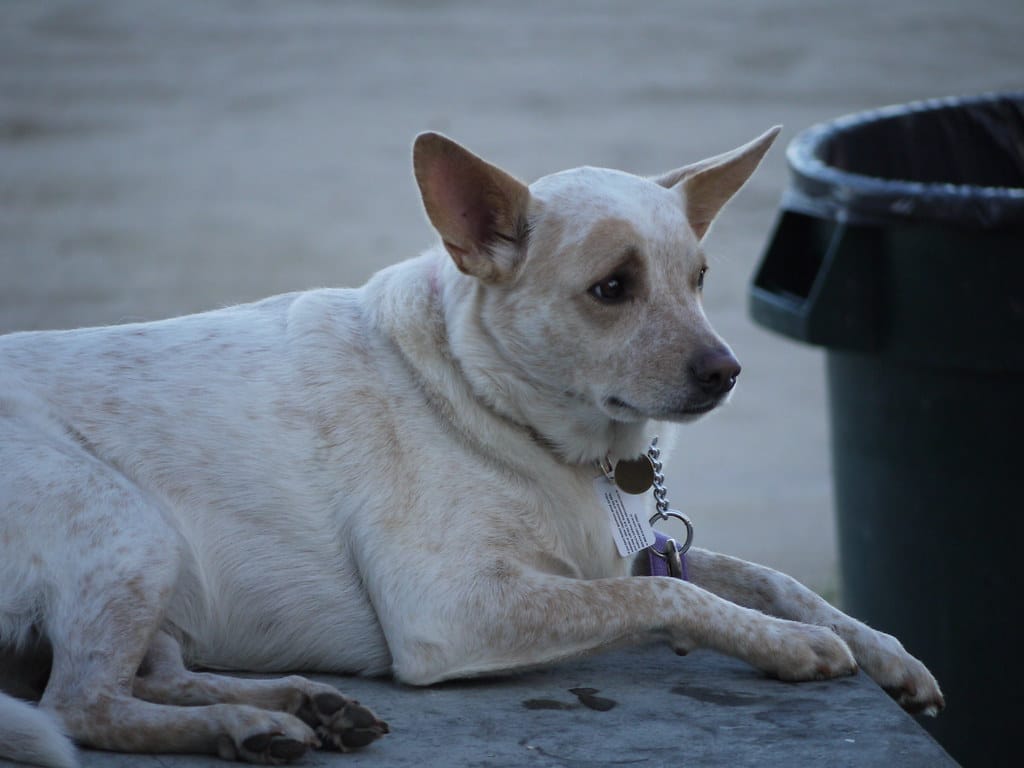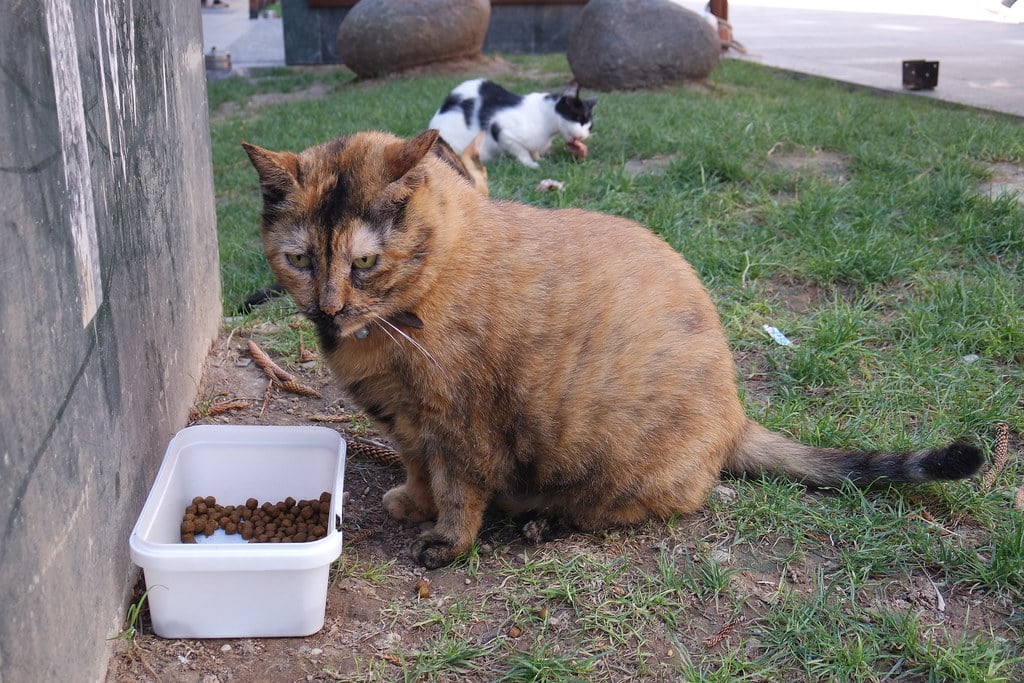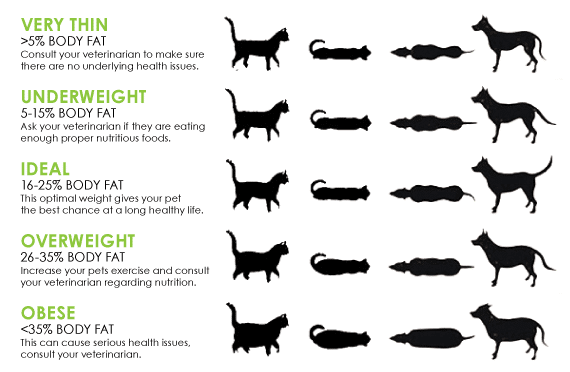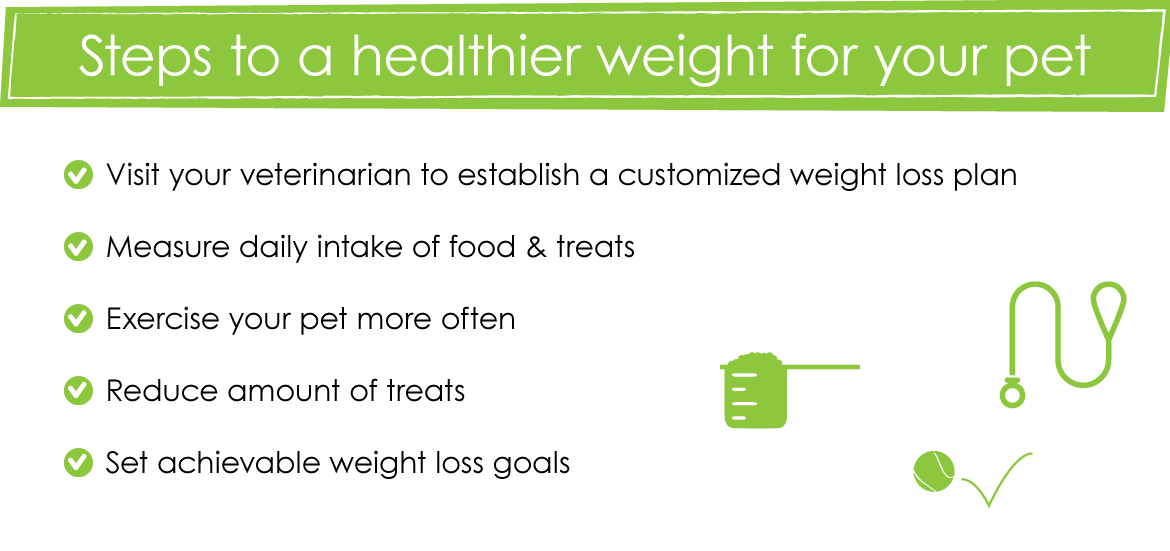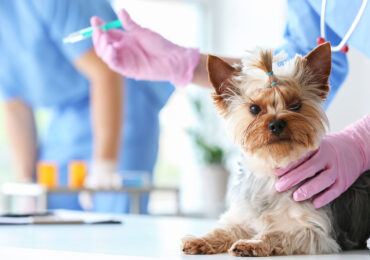Size continues to rise in the United States, not just for humans, but for our furry friends as well. With an estimated 60% of cats and 56% of dogs being overweight in the U.S., it is more important than ever to realize the risks involved in overindulging our pets.
Here are some steps that we can take to prevent and reduce obesity in our beloved furry family members.
The Risks are Not Worth the Rewards
Just like humans, packing on a few pounds may lead to serious health problems including:
- pet diabetes
- respiratory problems
- joint disease
- hypertension
- liver disease
- osteoarthritis
- lowered immune system function
- increased risk of tumor development
The most important and easiest way to prevent and cure obesity is by closely monitoring your pet’s food intake. It is important to realize the daily calorie requirements of your pet and to not exceed that volume, while still ensuring proper nutrition.
Related: Grain-Free Diets for Pets: Helpful or Harmful?
From treats to table scraps, make sure you account for every morsel your furry friend is consuming. While dog food packaging typically has a recommended feeding amount, it is a good idea to speak with your veterinarian about assessing the needs of your pet and asking for a customized suggestion on types of food and amount to feed based more specifically on your pet’s breed, age, and health history.
Rule Out Any Culprits
Because weight gain in pets can be gradual and therefore hard to notice, it is important to be proactive so it does not creep up on you. By scheduling annual exams and contacting your veterinarian if you notice your kitty cat or pooch packing on the pounds, you may be able to prevent an overweight pet from becoming obese.
Similar to body mass index for humans, pets have a standardized weight scale called a body condition score, which can be measured by your veterinarian to determine the health of your pet’s weight. Your veterinarian may also take the opportunity to rule out underlying health issues such as thyroid disease if they notice any oddities during their checkup.
Slow and Steady Wins the Race
If your pet has already been diagnosed as overweight, the next thing to do is work with your veterinarian to establish a long-term plan to manage your pet’s weight. Just remember that there are no quick fixes, and you must fully commit to the health of your pet.
Some helpful adjustments to make right away include picking a reasonable goal to help you keep on track with your pet’s weight loss success, measuring the amount you feed your pet (including treats), and making sure to exercise your furry friend, whether canine or feline.
The most important thing to remember on your pet’s weight-loss journey to health is that you don’t ever have to go it alone; we will be with you and your furry friend every step of the way. If you have noticed any weight changes with your pet lately or would like advice to prevent weight problems from arising, please contact us today at 701.757.3500.

